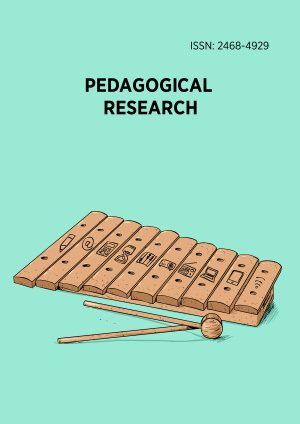Abstract
The objective of this study was to examine the effectiveness of blended physics laboratory experimentation on pre-service physics teachers’ (PSPTs’) understanding of the nature of science (NOS) during an electricity and magnetism laboratory course. The study used a non-equivalent comparison group using a pre-test-post-test quasi-experimental design that contrasted blended, virtual, and real mode of physics experimentations. A total of 63 PSPTs, 16 in blended experimental group, 26 in virtual experimental group, and 21 in real experimental group, participated in the study. Except for the type of manipulatives, the experiments in all the three cases were the same. Quantitative Likert-type questions were administered before and after the intervention and open-ended questions were administered after the intervention. The quantitative data were analyzed using one-way ANOVA and ANCOVA, while the qualitative data were categorized under naïve, mixed, and informed views. The results revealed that experimenting with blended, virtual, and real manipulatives were found to be ineffective in enhancing understanding of NOS on the PSPTs’. Apart from the type of experiment used, it was suggested that adequate consideration be paid to NOS issues in the laboratory courses in order to obtain well-educated and trained physics teachers.
License
This is an open access article distributed under the Creative Commons Attribution License which permits unrestricted use, distribution, and reproduction in any medium, provided the original work is properly cited.
Article Type: Research Article
PEDAGOGICAL RES, Volume 8, Issue 1, January 2023, Article No: em0144
https://doi.org/10.29333/pr/12607
Online publication date: 06 Nov 2022
Article Views: 2064
Article Downloads: 1319
Open Access References How to cite this article
 Full Text (PDF)
Full Text (PDF)